I am writing this in a hotel room in Edinburgh, which should signal that this column is going to be about all things Adam Smith.1 After all, 2023 is the 300th anniversary of his birth.
Smith’s statue on the Royal Mile is the obvious place to start my pilgrimage.
The statue was unveiled, by Professor Vernon L. Smith (no relation), on the 4th of July 2008. It takes the form of a 10-foot bronze statue on a massive stone plinth. It is the work of Alexander Stoddart, Scotland’s leading monumental sculptor. It shows Smith in later life.
Behind him is a plough, modelled from a contemporary plough in the Scottish Farming Museum, reminding us of the agrarian economics which Smith supplanted. Before him is a beehive, a symbol of the industry on which he believed progress was based. On top is a globe on which Smith rests his hand — made invisible by his academic gown. The gown itself reminds us of Smith the philosopher, exploring eternal ideas; and behind, St. Giles’s Cathedral completes the evocation (it is the building to Smith’s left you can just see in the left picture).
From the rear side (right picture), we see Smith’s 18th Century dress, with the City Chambers beyond, reminding us of Smith the economist dealing with practical matters. His neckwear is modelled on that worn by Thomas Jefferson, his wig is based on one of George Washington’s.
Next, we visit Smith’s grave in the Canongate Kirk graveyard.
As noted on the plaque on Smith’s grave, the graveyard also contains the grave of Smith’s first biographer Dugald Stewart. Stewart’s Account of the Life and Writings of Adam Smith, LL.D. was first published in 1794.
The last place Smith lived was Panmure House in Edinburgh. It was originally built in 1691 and occupied by Smith between 1778 and 1790.
Panmure House has now been bought by the Edinburgh Business School of Heriot-Watt University which undertook to rescue this historic building from dereliction. Following a 10-year, £5.6m renovation, Panmure was formally opened in November 2018.
Next, we go to Smith’s birthplace, Kirkcaldy. The first thing to see in Kirkcaldy is the location of Smith’s mother’s house.
The house was unfortunately removed in 1834. Below is what the address, 220 High Street, is like today.
Close by is Adam Smith Close, squeezed between 222 and 224 High Street. It was formerly known as ‘Halkett’s Close’.
In the pavement are markers which outline the important events in Smith’s life. See the (not-entirely-clear, sorry) video below.
The local Kirkcaldy Galleries has on display a copy of the first edition of the Wealth of Nations as well as some personal items from Smith.
The personal items include his snuff box and inkstand. There is also a Kirkcaldy Penny from 1797. This is a copper trade token which featured a bust of Smith. They also have a portrait medallion of Smith created by Glasgow sculptor James Tassie in 1797.
The Burgh School that Smith attended was relocated in 1843 and demolished in 1964. A theatre named after Smith was opened in 1899.
There is even a housing estate named after Smith in Kirkcaldy.
Of all the reasons to visit Scotland learning about Smith is one that should not be ignored.
By Paul Walker
With thanks to Tamsin Maw for helping with the photographs and collecting information.

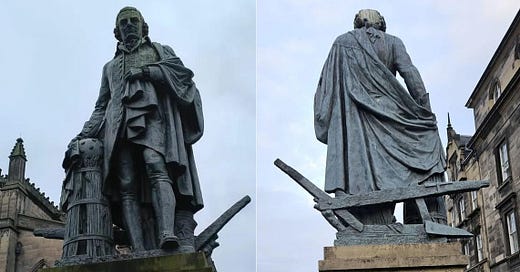



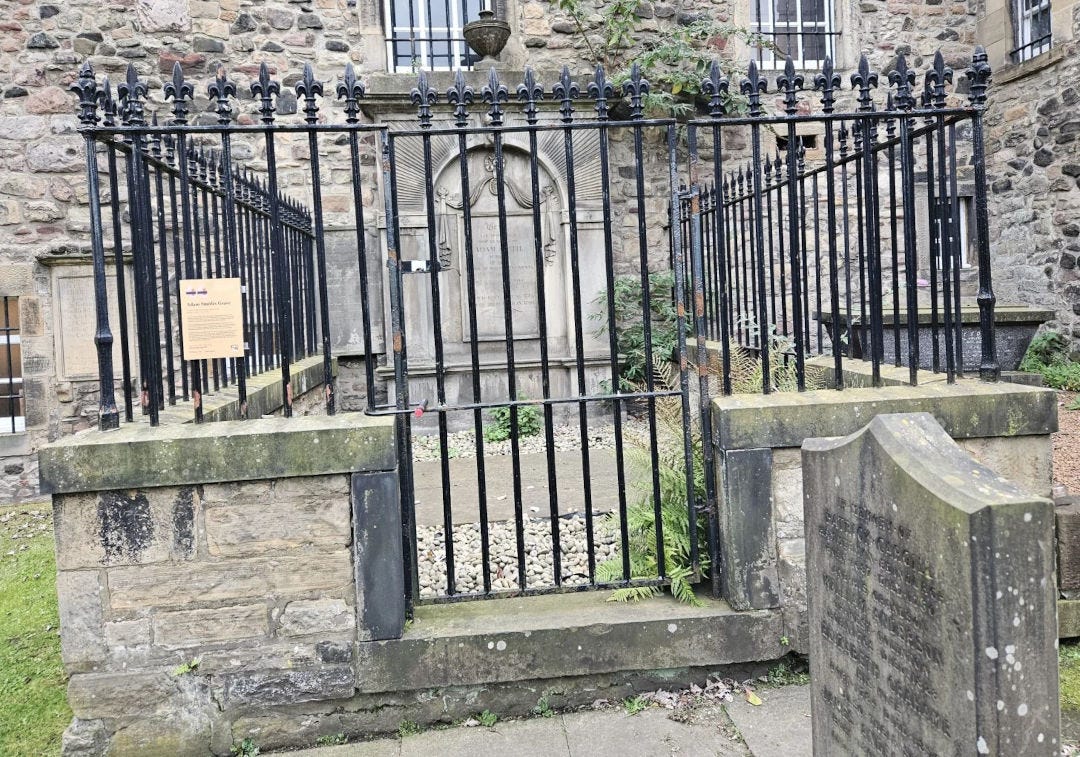



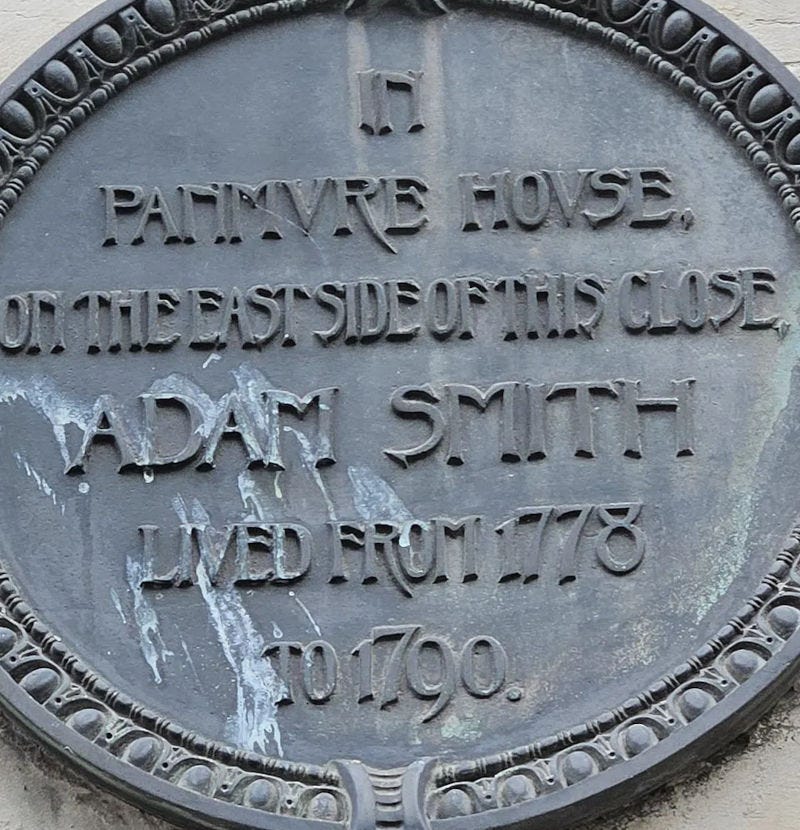
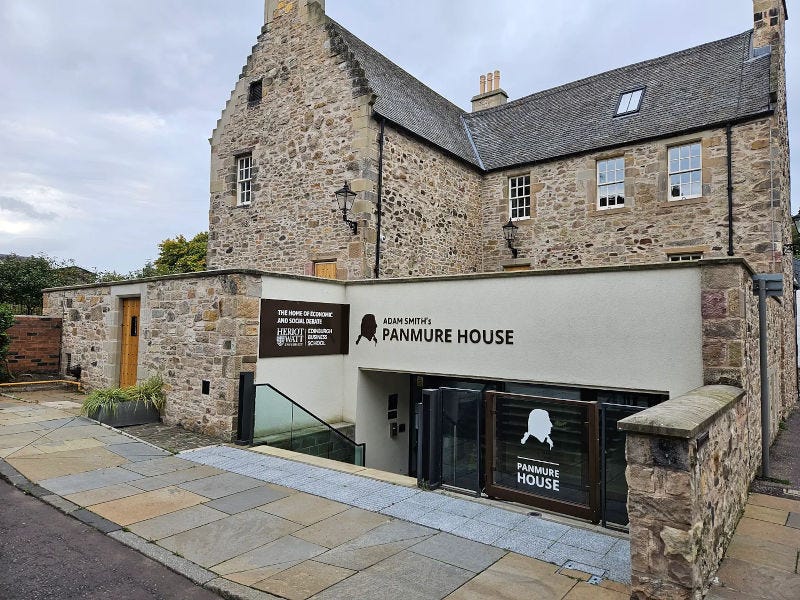
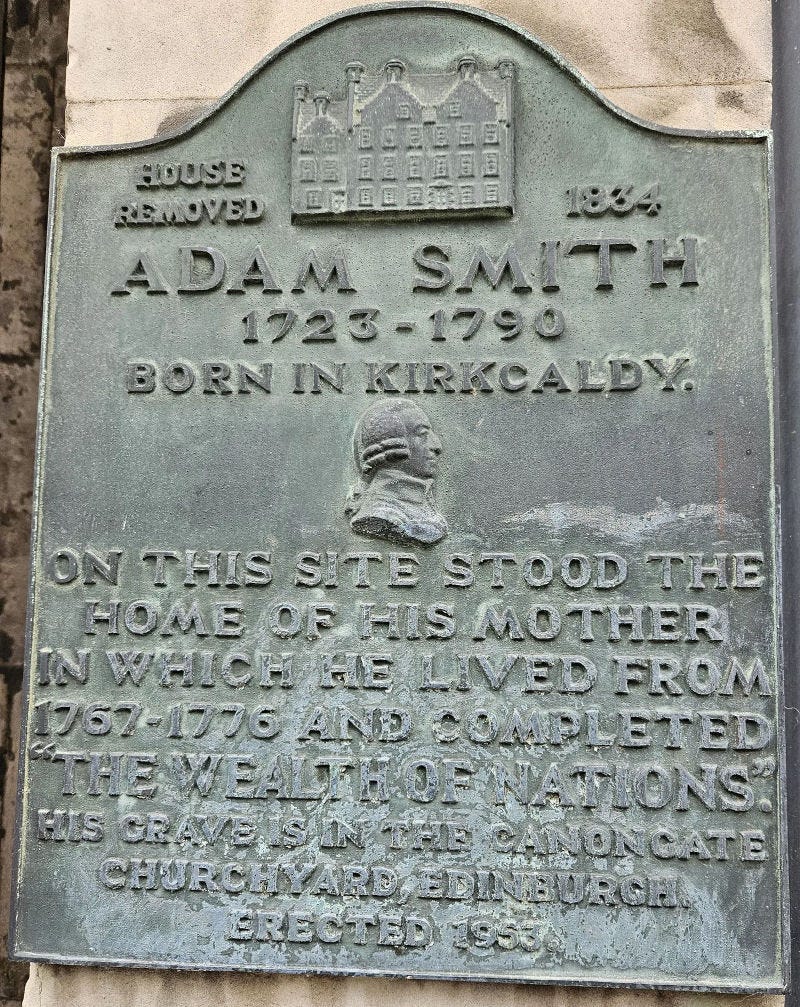

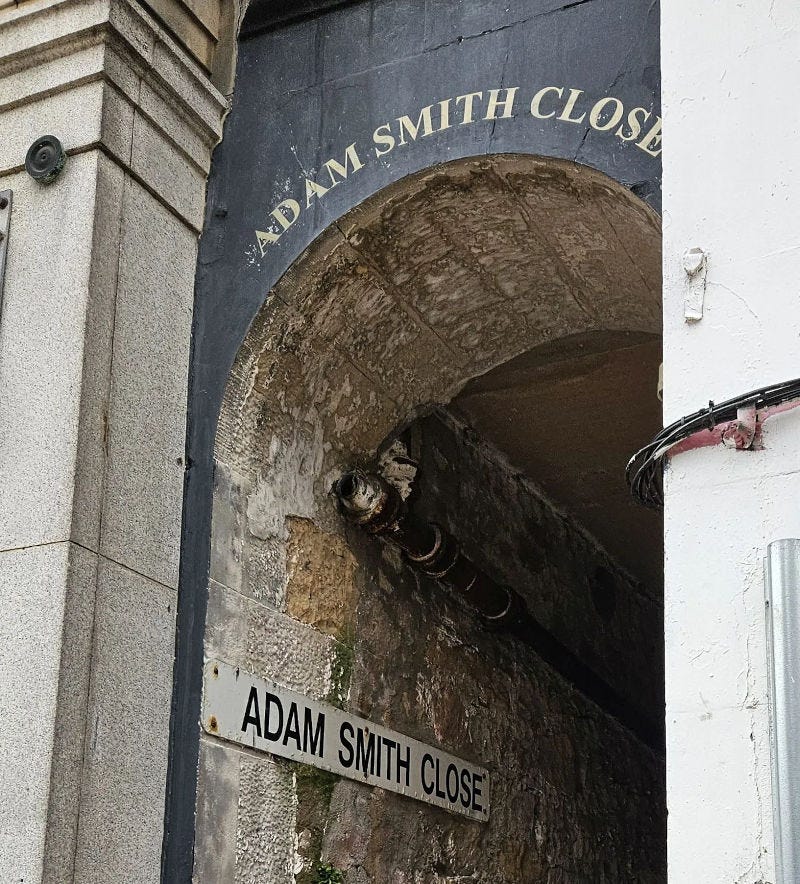
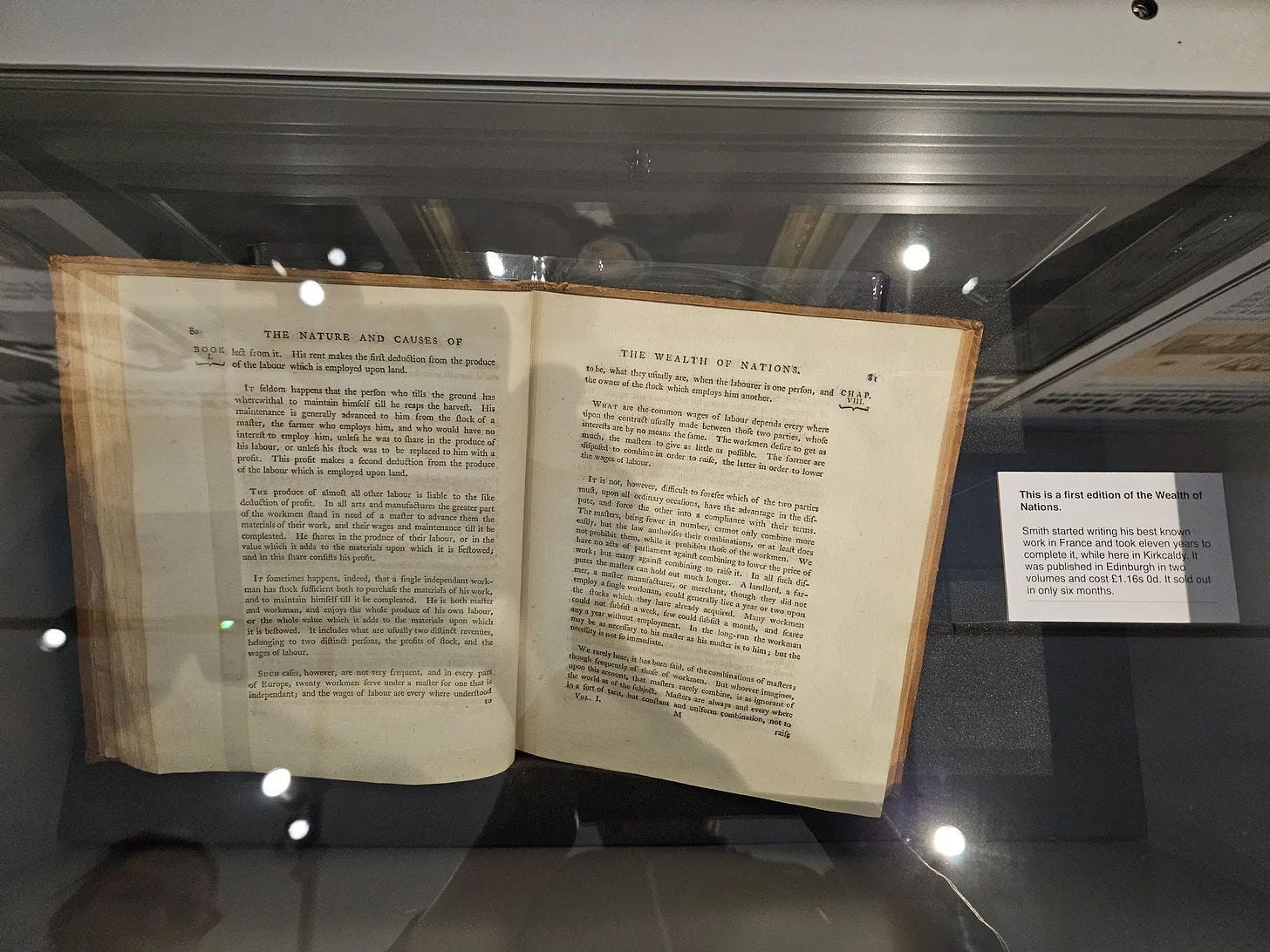
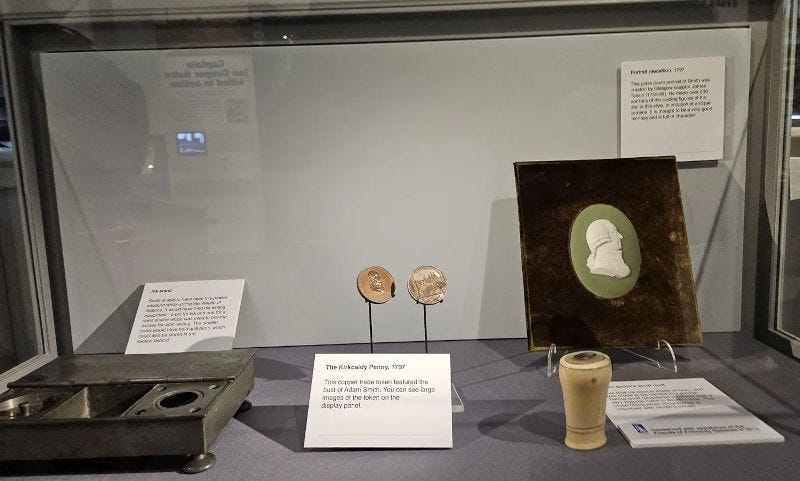



A tip from a reader:
Freakonomics did a really great mini-series on Adam Smith and his legacy - I highly rec! https://freakonomics.com/podcast/in-search-of-the-real-adam-smith/
True. But most Smith scholars today deal with both works in combination. Gone are the days the the "Adam Smith Problem".